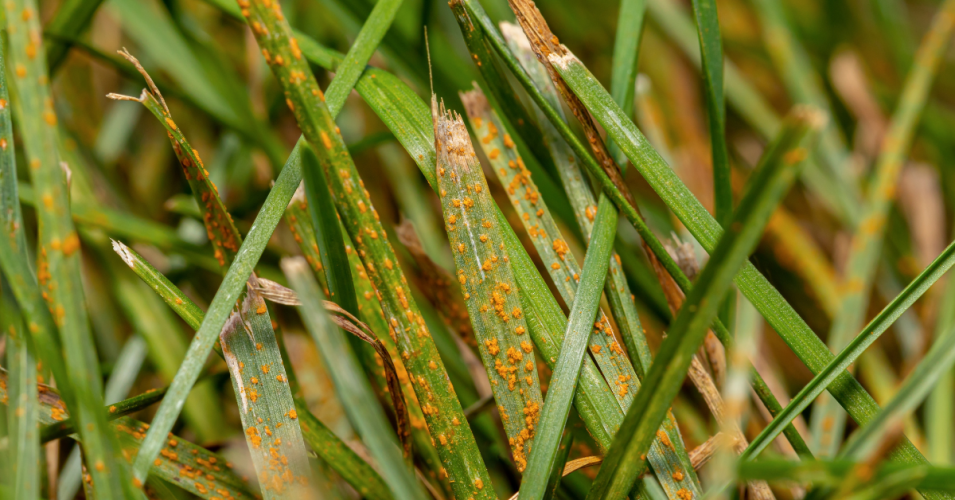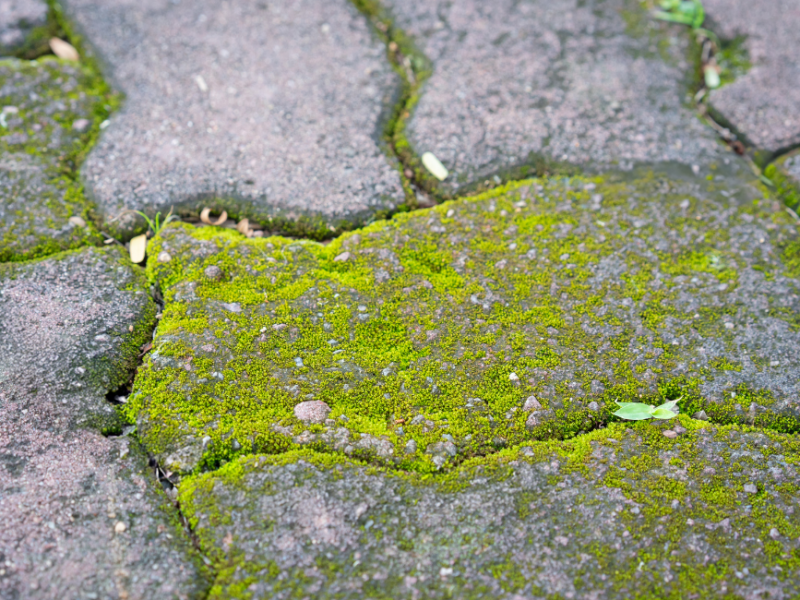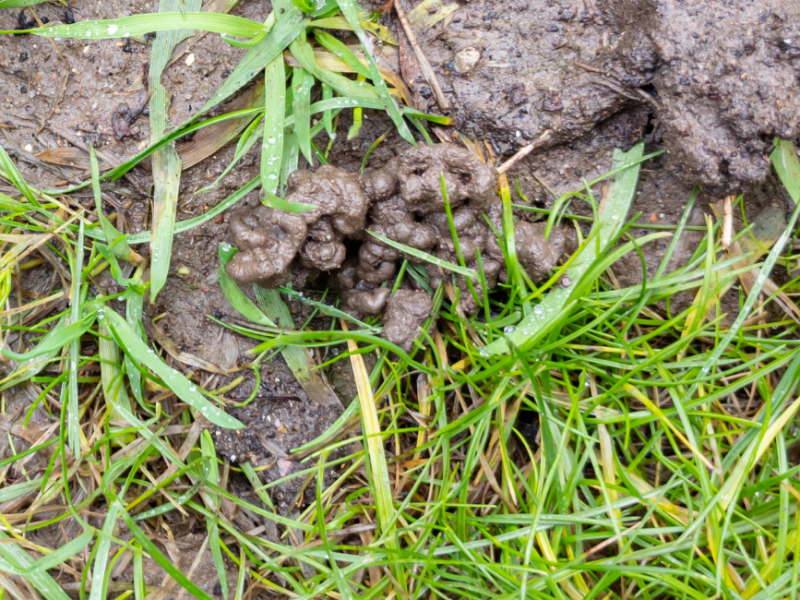After a long spell of dry, hot weather, any rainfall might feel like a welcome break, and your lawn might even look a little greener. But don’t be fooled. Sudden weather shifts, whether that’s rain or even a heavy dew, especially after prolonged periods of drought, can create the perfect breeding ground for lawn diseases.
If your lawn has already been weakened by stress, like dry soil, foot traffic, or poor nutrition, it’s more likely to be affected by disease-causing fungi. These issues often start subtly but can spread quickly if not identified and managed in time.
Here are four of the most common lawn diseases seen in UK gardens during summer, along with the signs to watch for and why they occur.
-
Red Thread
What it looks like:
You might notice patches of grass turning pale, almost straw-coloured, often with a pinkish tinge. Look closer, and you’ll see fine, red or pink thread-like strands growing from the tips of the grass blades.
Why it appears:
Red Thread is a fungal disease that tends to show up after a period of dry weather followed by warm, damp conditions, like a classic British summer! It’s especially common in lawns that are low in nitrogen, compacted, or poorly drained.
Why it matters:
While it doesn’t usually kill the grass entirely, Red Thread can leave your lawn looking unsightly and patchy for weeks. It’s often a sign your lawn needs a professional health check.
-
Leaf Spot
What it looks like:
Small, dark-coloured spots, ranging from brown and black to purplish, on individual grass blades. These can spread and join up, leading to larger patches of thinning or dead grass.
Why it appears:
Leaf Spot disease thrives in warm, humid conditions, especially after quick shifts in weather. Lawns that are overwatered, scalped too short during mowing, or have poor airflow are more susceptible.
Why it matters:
This disease can go unnoticed in the early stages, but over time it can cause significant thinning and leave your lawn looking sparse and tired, especially if the root zone becomes infected. Once it takes hold, it can be very difficult to recover without expert intervention.
-
Lawn Rust
What it looks like:
The grass appears dull or yellowed, and you’ll often find a fine, orange or rust-coloured powder on the blades. If you walk across the lawn or mow it, you may see the dust transfer onto your shoes or equipment.
Why it appears:
Rust disease typically strikes when grass growth slows down due to lack of nutrients, low sunlight, or water stress, then a period of damp weather follows. Shaded lawns and underfed grass are most at risk.
Why it matters:
Rust weakens your grass, leaving it vulnerable to further stress and other diseases. It’s not just a cosmetic issue, it’s often a symptom of deeper health problems in your lawn that need professional attention.
-
Dollar Spot
What it looks like:
Small, bleached, or straw-coloured spots about the size of a coin. These can merge over time to form larger patches, especially in humid conditions.
Why it appears:
Caused by a fungus called Sclerotinia homoeocarpa, Dollar Spot appears when the lawn is undernourished, particularly low in nitrogen, and conditions are warm and damp. Poor drainage, excessive thatch, and overnight moisture can also trigger outbreaks.
Why it matters:
Dollar Spot is often mistaken for sun scorch or dryness, but it can persist even during wet spells. Once it spreads, it can damage large sections of your lawn, creating an uneven, unhealthy appearance that’s difficult to reverse without the right support.
What These Diseases All Have in Common
All of these summer lawn diseases are fungal in nature and often begin in lawns that are:
- Compacted or poorly aerated
- Overwatered or poorly drained
- Cut too short or irregularly mown
- Shaded and poorly ventilated
It’s important to remember that fungal diseases often don’t disappear on their own. And unfortunately, by the time you notice visible symptoms, the damage may already be underway beneath the surface.
Why Professional Help Makes the Difference
At Greensleeves Lawn Care, we specialise in diagnosing and managing common lawn diseases before they become major problems. Unlike DIY methods that often mask the issue, our disease control treatment can treat and prevent lawn disease.
We use specialist treatments and professional-grade products that aren’t available to the general public, ensuring effective, longer-lasting results.
Concerned About Lawn Disease? Let Us Take a Look
Noticed strange patches, discolouration, or dusty grass this summer? Don’t wait for lawn disease to spread across your lawn. Early detection is key to preventing damage, and keeping your lawn vibrant and green to enjoy this summer.
Book your free lawn analysis and no-obligation quote with your local Greensleeves Lawn Care expert today.





